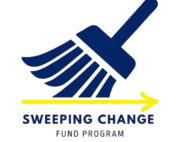by Liz Marquette, Hood College
Part I: Why Teach Rainwater Erosion and Mitigation?
Thunder claps in the distance as lightning streaks the midday sky with flecks of white light. Raindrops pound the soil, launching tiny flecks of mud and sediment into the air. While this may be a familiar setting, the ecological impacts of rain and the systems we have developed to manage them are far from familiar. In fact, over a third of eighth grade students in the United States performed “below basic” on the most recently published NAEP science assessment, highlighting a lack of environmental education within the school systems (NGSS, n.d.). Rainwater, weather, and the impact of these on life, both animal and plant, are integral parts of the Next Generation Science Standards. In order to develop learners who will be able to participate in a globally connected society, we must educate those learners on basic and advanced fundamentals of math and science (NGSS, n.d.). For many, this background knowledge can be activated by beginning this exploration with something that every human on planet Earth has been exposed to: rain.
Share
LATEST RESOURCES
Teaching and Learning about Obligate Species in Vernal Pools
Teaching and Learning about Obligate Species in Vernal Pools
Suzanne E. […]
Connecting Students to Nature in the Winter
Winter Wonderland Nature Activities Calendar: Download Activity Calendar
Connecting […]



![A logo for The Sweeping [...]
</p srcset=](https://blueswallowfarmfoundation.org/wp-content/uploads/2025/03/sweeping-change-fund-1024x538.jpg)



